
2020-12-14 09:00:38 Author: blog.didierstevens.com(查看原文) 阅读量:337 收藏
In this first example, I show how to decrypt a TLS stream with Wireshark.
I made my example as such, that the encryption in this example is done with keys derived from a master secret. This master secret is derived from a pre-master secret, which is securely exchanged between the client and server using RSA crypto.
Remark that this method will not work with modern browsers and web servers, as they use perfect forward secrecy. This will be explained in part 2.
I use my TCP honeypot to set up a web server, and curl to request a page over TLS. I use curl for Windows build with OpenSSL, and not the curl version distributed with Windows 10, that relies on schannel.
I use the following curl command with options to force a TLS encryption method that is based on a pre-master secret that is encrypted with the public RSA key of the server:
curl.exe –verbose –insecure –tls-max 1.2 –ciphers AES256-SHA –dump-header 01.headers –output 01.data –trace 01.trace –trace-time https://192.168.190.130
To force a cipher suite that is based on RSA for the exchange of the pre-master secret, I use options –tls-max 1.2 and –ciphers AES256-SHA.
Option –insecure is necessary because I’m using a self-signed certificate.
I choose the other options to produce as much information as possible: downloaded content (01.data), headers (01.headers) and a trace file (01.trace).
Here is a screenshot of the packet capture for this HTTPS traffic:
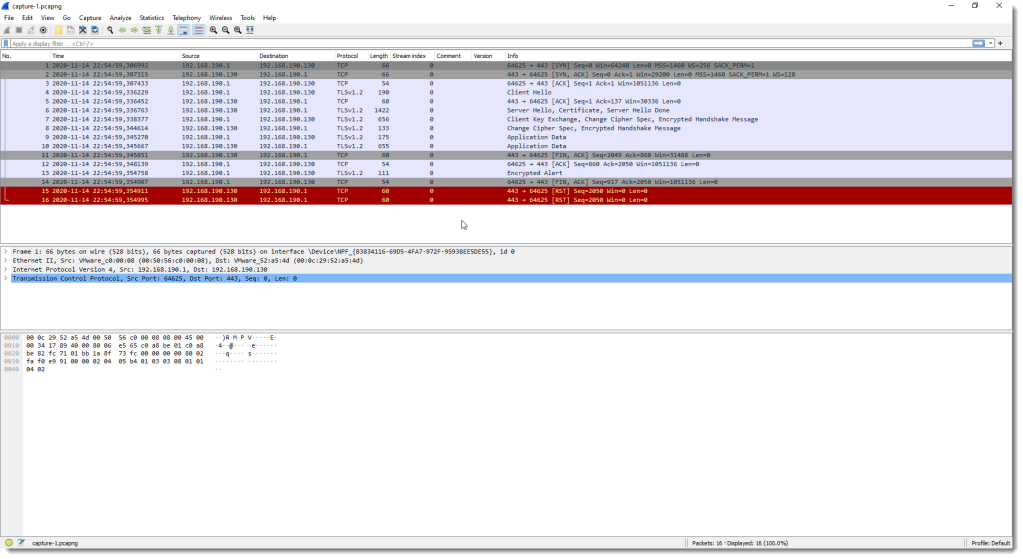
Following the TCP stream shows that the data is encrypted (except for some parts during the handshake, like the certificate):
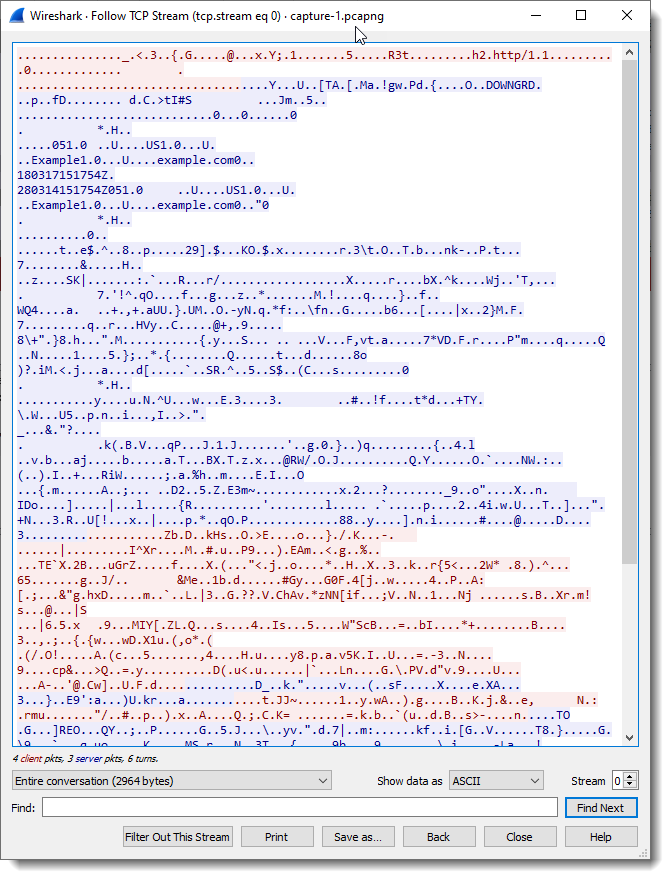
If we inspect that handshake, more precisely, looking at the Server Hello packet, we see that a cipher suite was selected that relies on RSA and AES:
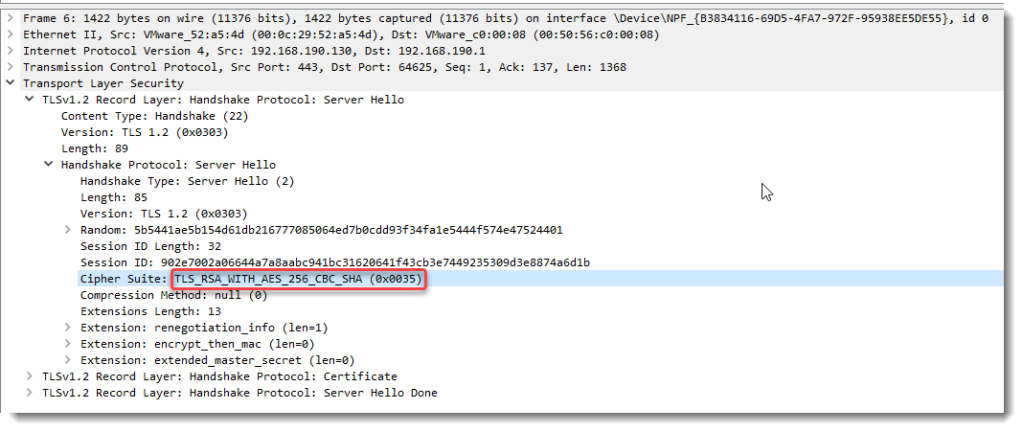
Data encrypted with this cipher suite can be decrypted by Wireshark when we provide the private RSA key of the server. That’s because in this example, Wireshark needs to decrypt the pre-master secret sent by the client to the server. This pre-master secret is encrypted with the public RSA key of the server.

These are the steps to follow:
Go to preferences:

Search for the TLS protocol, and edit the RSA Keys list.
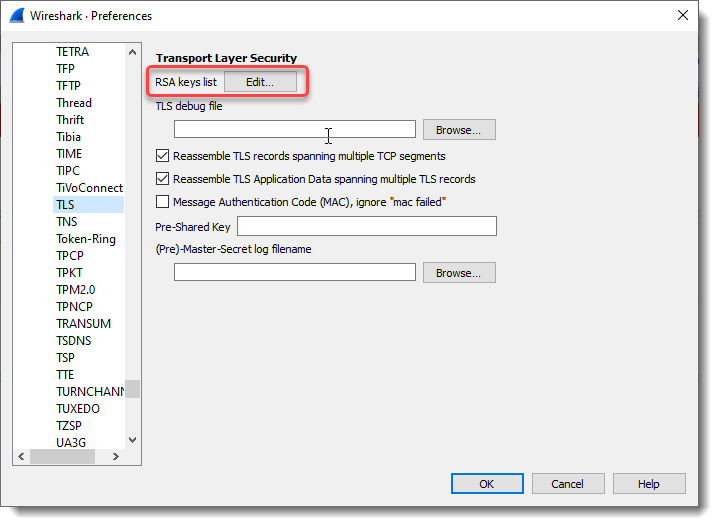
Click the + button to add a key:
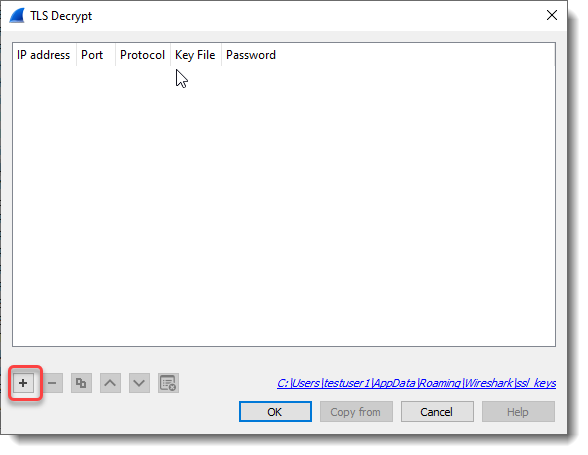
Then add the RSA private key key-20180317-161753.pem.
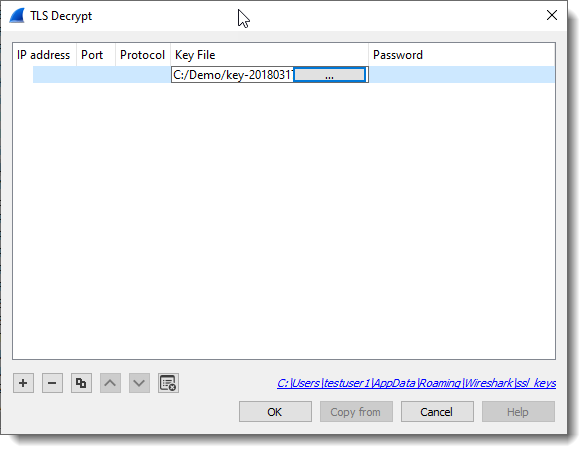
When you then close the dialogs, and the main screen regains focus, the TLS data will be decrypted:
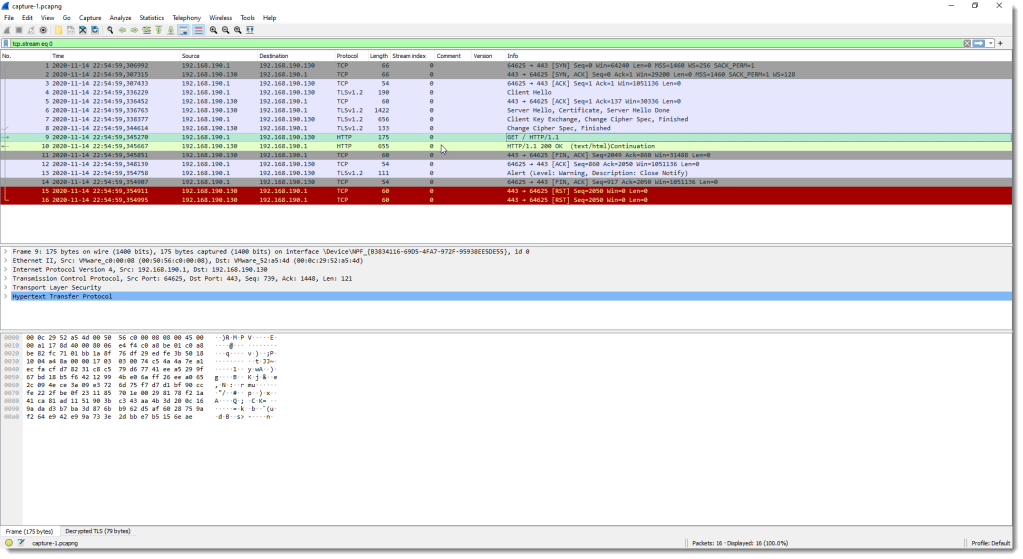
Remark that for packets 9 and 10, the Protocol column value changed from TLSv1.2 to HTTP, and the Info column from Application Data to HTTP methods and replies.
And in the bottom view (hexadecimal & ASCII dump), a “Decrypted TLS” tab was added:
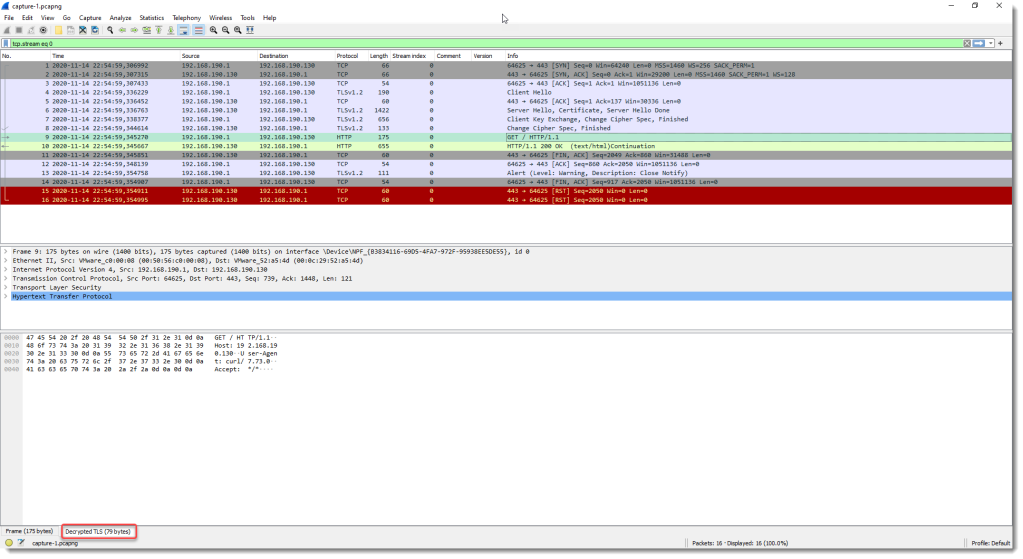
We will now try the 3 available Follow Streams commands:
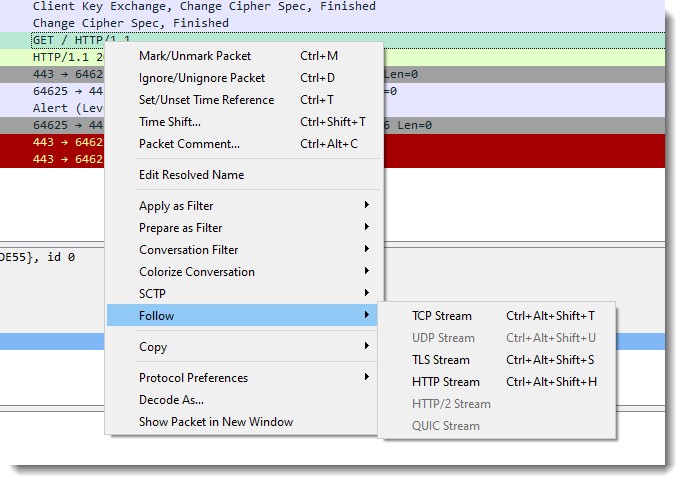
When we select TCP, we still have encrypted data:

But when we select Follow TLS stream, we can now see the decrypted data:
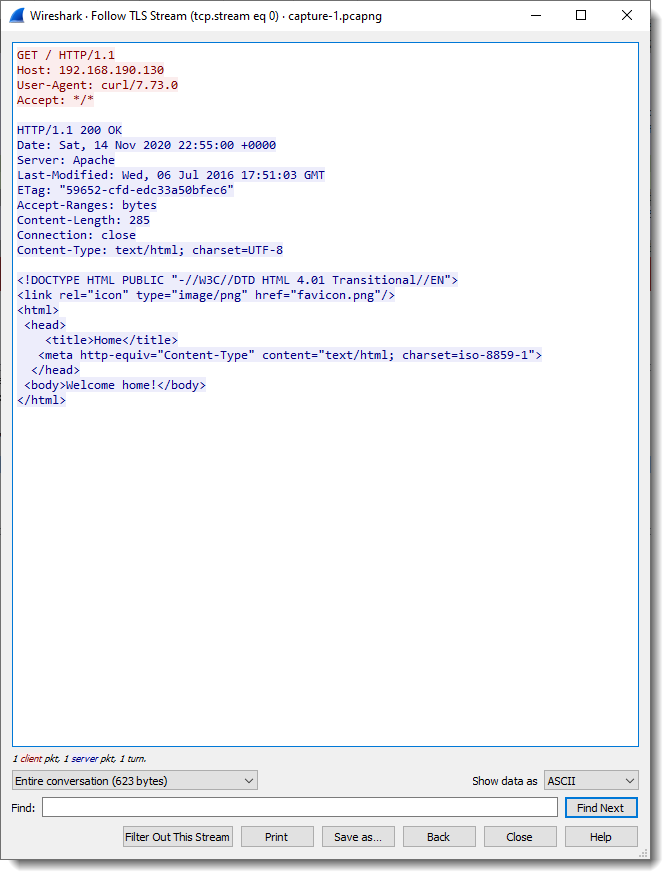
And with Follow HTTP, we also have decrypted data:
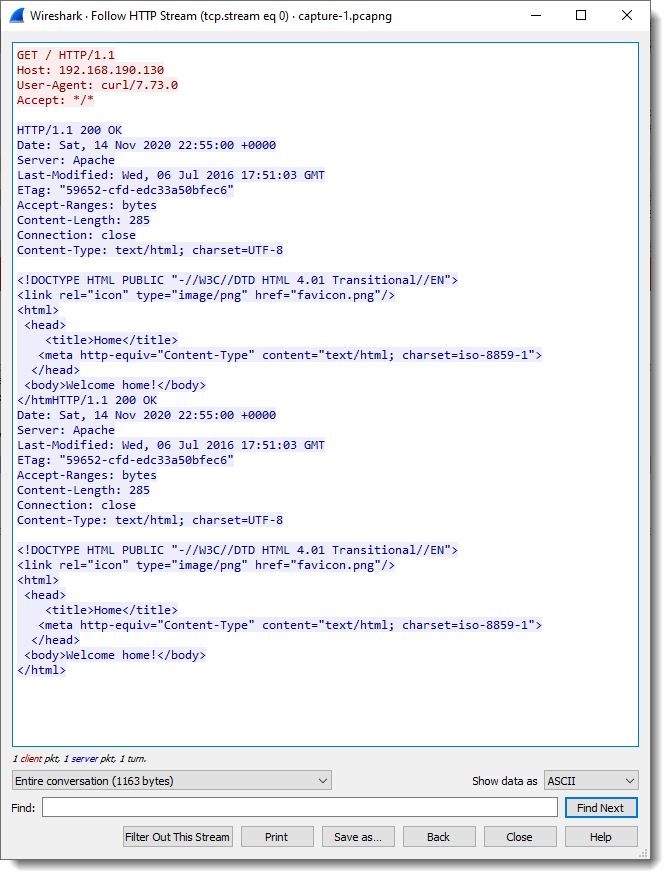
But remark that there is some data duplication, this is possibly a bug in Wireshark. To be investigated.
In part 2, we will look at the same request, but without using the server’s RSA private key, and also at an example with perfect forward secrecy.
The capture file, private key, and other data used in this blog post can be downloaded here:
tls-decryption-part-1.zip (https)
MD5: 905A5D3F2D0AEAA98BD3751AD5CAD9E2
SHA256: 03175A0C6EC5B451769AA7627BFA0487FFFB2485D455D467CCCA9CCD1075ACA9
如有侵权请联系:admin#unsafe.sh